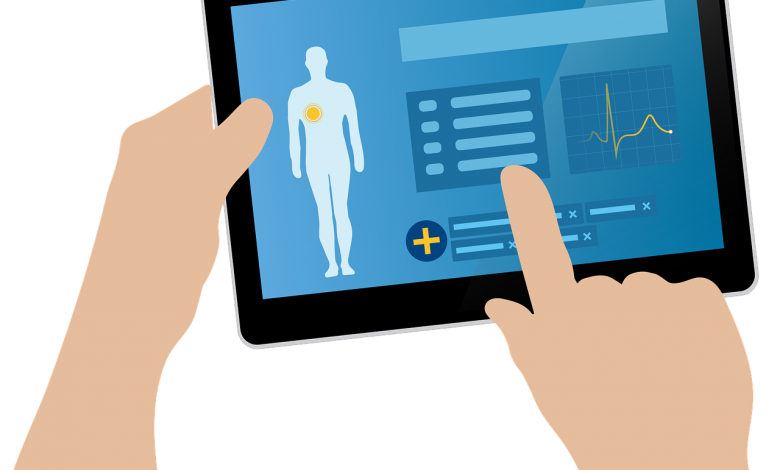
Technology revolutionized everything in our lives, ranging from transportation to shopping. This is even true when it comes to medical care. Instead of rushing to the nearest hospital ER or making an urgent care appointment, patients can lookup their symptoms online. However, not many people know about how apps are replacing insurance companies and hospitals. They cover copays and connect you with doctors around the clock. Meanwhile, consumers may struggle to even find clinics open on Saturday.
Above all else, going to the ER, in recent years, started to become a nightmare. Firstly, patients must wait hours, if not all day, until they see a doctor or nurse. After that, dealing with bad medical news becomes even more difficult. If the problem ended up being minor, it only adds to the frustration of wasting your day at the hospital. This, of course, doesn’t include the subsequent headache of insurance copays and deductibles.
Going back to the start, this is one area that technology has certainly improved. Instead of going to the nearest hospital ER or trying to find clinics open on Saturday and Sunday, an app can instantly connect you to a certified and experienced doctor. In fact, some apps will even compete with your insurance and cover portions of your medical bills.
Paying More and Waiting Longer
According to the National Institutes of Health, about 14% to 27% of patients that go to the ER could receive treatment elsewhere. In other words, an urgent care appointment or walk-in visit would suffice.
Perhaps most noteworthy, these relatively less-serious visits cost a total of $4.4 billion every year. For a start, they are increasing the pressure on hospitals.
In 2010, people went the ER 44% more times than they did in 1996. During that time, the actual number of available ER departments declined by 11%.
Needless to say, all of this meant that patients have to wait longer until a doctor or nurse treats them. In fact, the average waiting time is over an hour and a half.
Meanwhile, between 2010 and 2016, the cost of going to the nearest hospital ER almost doubled. It went from $1,026 to more than $1,900 per visit. Getting admitted into the hospital costs patients over $13,000, as the Harvard Business Review points out.
Closer Than the Nearest Hospital ER
Needless to say, it takes patients much less time to open a smartphone app than to drive to a hospital, let alone wait in the ER. When it comes to expenses, you can download most of the popular software for free.
Seeing a doctor (via webcam) is also very affordable. Express Care Virtual, for example, only charges users $49 to do so. After that, a licensed healthcare professional diagnoses and treats them.
Other apps, such as Lemonaid, cost as low as $25 per session. Compare that to paying $2,000 at an ER and waiting for hours to be seen. Furthermore, some software providers will even accept your health insurance.
In short, by turning an all-day hospital visit to an at home treatment program that takes an hour or less, consumers save plenty of money and time.
Cheaper Than Insurance
Apart from connecting patients with doctors, some apps may replace your insurance and help you find discounted drug prices.
For example, GoodRX gives consumers coupons and show them the pharmacies that offer the most affordable prices for each medicine. After that, patients can use their coupon when they purchase their medication.
Not only do GoodRX’s prices compete with most insurance policies, but you can download the app for free. The average monthly health insurance cost, on the other hand, has been rising over the last few years.
The Cost of an Urgent Care Appointment
While urgent care helps relieve the pressure on hospitals, there are still downsides to it.
Firstly, an urgent care appointment or walk-in costs between $100 and $150. While this is significantly lower than a visit to the nearest hospital ER, it is still almost double the cost of using an app for treatment.
In fact, even doctors acknowledge that urgent care has plenty of limitations. About 66% of them believe that the number of less-serious ER visits didn’t change or, at times, increased despite the growing popularity of urgent care.
Only 22% of doctors believe that these clinics reduced the number patients with minor injuries that go to the ER. Just as importantly, 41% of physicians believe that urgent care will not lower medical costs for consumers.
The Struggle: Finding clinics open on Saturday and Sunday
One of the main reasons why urgent care doesn’t reduce ER visits is that hospitals are available on weekends. Even though you don’t need to make an urgent care appointment, visiting a provider is still time consuming.
This is particularly true if you live in an area that doesn’t have many options or when there aren’t any clinics open on Saturday and Sunday.
When it comes to apps, a recent study expects this technology to save American consumers almost $7 billion per year on medical expenses. They allow patients to receive incredibly cheap treatment and at home.
Above all else, the doctors are available 24 hours per day, which makes these apps especially useful in areas where there aren’t any clinics open on Saturday or Sunday.
A Few Clicks Away
Apps, of course, can’t replace an actual hospital, especially when it comes to serious situations. However, digital medical care is cheap, easily accessible, and reliable.
As a result, patients with minor injuries can get the treatment that they need from home, without having to run to the nearest ER. In turn, hospitals can focus on treating severe problems in a quicker and more efficient manner.
Equally as important, dumping your health insurance and resorting to apps is certainly risky. However, using technology to get discounts without having to pay a monthly premium is both financially and physically healthy.




